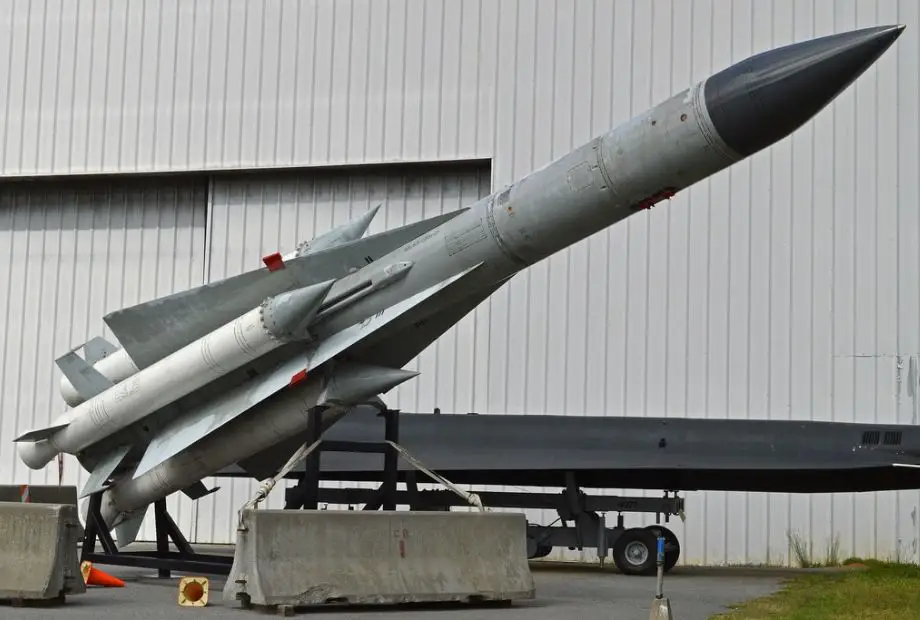Ukraine modernizes decommissioned soviet S-200 air defense system to shoot down Russian aircraft
Ukraine is suspected of having shot down a Tu-22M, a Russian strategic bomber, as well as two A-50, long-endurance reconnaissance aircraft, using S-200 missiles over fifty years old. This feat raises the hypothesis of a new improvement of old Soviet-made S-200 air defense missile system.
Follow Army Recognition on Google News at this link

S200 air defense missile system. (Picture source : CSIS missile defense project)
The S-200 [NATO: SA-5 Gammon] is a long-range anti-aircraft missile system developed in the USSR in the 1960s, which could hit air targets at up to 160 km in its early versions.
The history of the S-200 began in 1958 when the Soviet Union felt the need for new air defense systems capable of destroying targets at a much greater distance than the S-75 and S-125 complexes available at that time (the maximum range of which was only 45 km). The new S-200 system was supposed to counter enemy strategic bombers and reconnaissance aircraft, the main ones at that time being the US B-52, U-2, and SR-71.
Unlike previous complexes, which used the command method of controlling the missile, Soviet designers integrated into the S-200 a fundamentally new guidance system using semi-active radar homing. This revolutionary step made the missile, as it could now capture and engage a target without the need for direct control commands from the ground station. For this, it was only necessary to illuminate the target with a special continuous-wave radar.
Versions of the S-200 system
During its time, the S-200 system underwent four modernizations, the most famous of which were the S-200V Vega, the S-200M Vega-M and the basic version of the S-200 Angara. With each modification, missile and guidance were improved, increasing the accuracy of the system.
In the S-200V Vega, the range was increased from 160 to 180 km. The next version, the S-200M Vega-M, could destroy targets at 240-255 km. The Vega-M modification included changes not only to the missile, but also to the ground station and the launcher.
The upgraded version of the S-200D Dubna defense system is worth mentioning. It was designed to use new missiles capable of hitting targets up to 300 km away. However, the Soviet military leaders rejected it for service due to its incompatibility with the missiles used in other versions of the S-200. As a result, only 14 units of the Dubna were produced, and they were later disposed of.
All missiles used in the S-200 are unified. This means that newer modifications of the system are backward-compatible with missiles developed earlier. The system can launch 5B21, 5B21A, 5B21P, 5B28, and even 5B28N missiles with a nuclear warhead. The characteristics of these missiles are generally similar, but they have been improved over time, focusing on increasing the flight range and improving its guidance. The most common missile is the 5B28, which was an extensive modernization of the 5B21. It was produced later than other versions so a certain number of 5B28 rockets have survived until today.
The 5B28 missile is designed to destroy targets flying at speeds of up to 3,500 km/h at altitudes from 300 m to 40 km. The maximum damage range of this missile is 255 km; however, with the range increase, the probability of a hit drops significantly. The nominal kinematic range is about 300 km, and the warhead mass is 217 kg.
Ukrainian modification ?
The decommissioned in 2013 air defense systems unexpectedly got a new lease on life during Russia’s full-scale war against Ukraine.
It is important to note that none of the S-200 modifications developed in the USSR could boast a range of 308 km. The longest range had the S-200D Dubna, reaching up to 300 km. However, these systems have been destroyed and are no longer in service in Ukraine. In addition, although the theoretical range of the 5B28 missile reaches 300 km, its accuracy significantly drops after 250 km.
The S-200 air defense system is not mobile like the S-300 and S-400 systems. The launchers of the S-200 are placed in stationary positions prepared in advance. However, in the case of the downing of the Tu-22M3 aircraft, it is possible that the launcher was placed on wheels. Had it not been made mobile, preparing stationary positions for launchers and S-200 ground stations would have inevitably attracted the attention of Russian intelligence.
Indeed, it raises the question of whether Ukrainians have had the resources and technology to create a new version of the S-200, and what are its characteristics or if ukrainians used another kind of air defense.
Defense News April 2024
- Hits: 9602
















